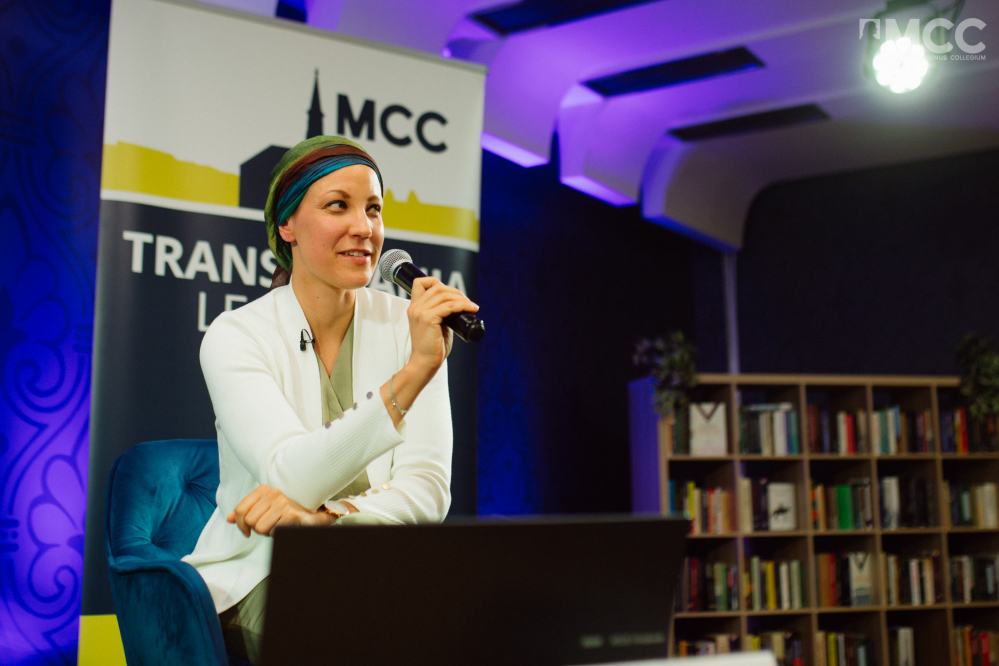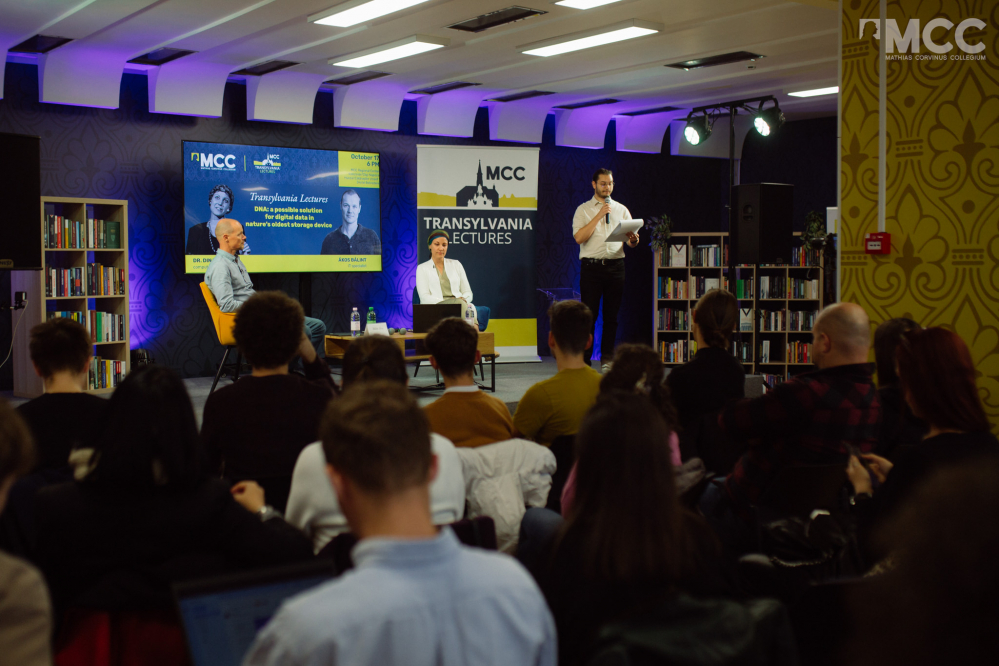Reading time: 3 minutes
We are facing a global data storage crisis. Storing and archiving digital data on traditional media like hard drives presents significant economic and ecological challenges. It’s expensive, and our current solutions are not built to last. DNA, nature’s oldest data storage medium, may hold the key to a sustainable future. This potential was explored in a lecture by bioinformatician Dr. Dina Zielinski at the Mathias Corvinus Collegium (MCC) center in Kolozsvár/Cluj on October 17th.
Data generation is skyrocketing, pushing us into the era of zettabytes (ZB), placing immense strain on conventional storage systems, which consume enormous amounts of energy. Throughout history, humans have evolved from storing information on stone tablets to digital devices, but every new format requires a new technology to read it. The challenge is finding a solution that is both sustainable and long-lasting, and DNA might just be it.
At the MCC Transylvania Lectures, Dr. Zielinski demonstrated the potential of synthetic DNA with an impressive example: if all the world's data were stored in DNA, it could fit into just 150 Easter eggs. DNA can encode text, images, and music, just as easily as biological information, and it remains stable for thousands of years if stored in the right conditions. Unlike magnetic tape or paper, which degrade over time, DNA storage could last for millennia, a fact exemplified by the preserved DNA of Ötzi the Iceman. As Dr. Zielinski noted, “We can learn more from Ötzi’s DNA than from a broken smartphone.”
While the idea of storing data in DNA might sound like science fiction, research in this field has accelerated over the past decade, and costs have dropped significantly. In 2017, encoding 2 MB of data into DNA cost $7,500, but today, it costs around $100 per megabyte. Dr. Zielinski emphasized the long-term promise of this technology for archival storage.
The process of storing data in DNA involves translating binary data (0s and 1s) into the four DNA bases: A, T, C, and G. This allows any digital file to be encoded and later retrieved through sequencing. The process has become remarkably efficient, taking just minutes to complete. According to Dr. Zielinski, DNA storage will likely first find applications in long-term data archiving, especially for “cold data” that doesn't require frequent access.
Dr. Zielinski likened the potential impact of DNA storage to the invention of the printing press. A single DNA sample can yield 200 trillion exact copies, and its flexibility could benefit other fields, including genetic research and vaccine development. This technology is attracting significant investment from global companies and governments. Dr. Zielinski also encouraged programmers to explore DNA coding, as the method is available for free on GitHub.
DNA storage might seem futuristic today, but it holds the promise of preserving our digital heritage for generations, offering a durable and eco-friendly solution to the challenges of modern data storage. As long as DNA exists, it will remain relevant—unlike floppy disks and CDs. The future of storage may very well lie in the same molecules that encode life itself.










